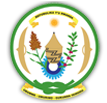Kigali, 30 August 2018:Rwanda is steadily implementing its strategic plan of crafting secondary cities with the ultimate objective of decongesting the capital city Kigali.
Over the last 5 years, the implementation of the Economic Development and Poverty Reduction Strategy II (EDPRS II) 2013/14 – 2017/18 hinged on four thematic areas, namely; Economic Transformation, Rural Development, Productivity and Youth Employment, and Accountable Governance.
Specifically, under “Economic Transformation”, the Government of Rwanda (GoR) envisaged accelerated economic growth and restructuring of the economy towards more services and industry as we move towards middle income country status.
It is this great demand on service delivery for citizens within Kigali that challenged the government to search for solutions on how this will be managed with future population growth.
This is why the Government, as laid out in EDPRS II, looked at developing secondary cities in order to “off-load” the pressure on Kigali, and as a way to manage the needs of a growing population while still delivering quality service to all Rwandans.
In order to avoid undesirable imbalance and provide a better living condition to all people, Rwanda focused on transformation of the economic geography of Rwanda by facilitating urbanization and promoting six secondary cities that are serving as poles of growth and investment: Rubavu, Huye, Rusizi, Muhanga, Musanze and Nyagatare.
Today, the development of these cities is ensuring more balanced regional growth and opportunities for increased access to off-farm employment for a larger proportion of the population.
The Government of Rwanda has increased attractiveness of these cities by putting in place strategic investments and economic projects including investment in interconnectivity of the road network linking urban areas, secondary cities and affordable housing.
Many public services that were easily available in Kigali, such as inner-city public transport, business registration services, specialized healthcare services, and multiple schooling options, are now available in other cities.
This has made opportunities for investment and potential for a viable social life which will attract people from the capital to be available outside of the capital.
While Kigali City needs a continuous support to improve management of service provisions to an exponentially growing population and becoming a regional hub, the Government has simultaneously supported the development of a network of secondary cities.
Over the last year, these secondary cities have gained capacity to generate finances from local revenues to support their development in line with the local development plans.
The plan to develop secondary cities was spearheaded by the Ministry of Infrastructure (MININFRA) and is anchored on prioritizing a hierarchical network of urban and urbanizing centres, providing services and attracting economic activities countrywide.
In implementing this priority, World Bank has financially supported the GoR to provide basic infrastructures as well as upgrading unplanned six (6) secondary cities mentioned above, which were identified as pilots to be developed as regional centers of growth and investment.
With this support the Rwanda Urbanization Development Project (RUDP) arose from the GoR’s target of getting the urban population up 35% as stipulated in its Vision 2020, and EDPRS2 to prioritize secondary cities as poles of economic and urban population growth that will promote sustainable development.
In the current first phase that cost $28million, roads equivalent to 28Km have been constructed in the 6 secondary cities. Drainage channels totaling 13Km have been built.
The overall objective of the project is to support Rwanda’s urbanization process by delivering basic services that will improve living conditions and promote local economic development. (Highlight).
According to Minister of State in charge of Transport, Hon. Eng. Jean de Dieu Uwihanganye, the Government of Rwanda is committed to support secondary cities through strategic infrastructure investments in roads, street lighting, constructing bridges and drainages, that help create jobs, attract investors and strengthen the middle class.
“Local leaders know best what their cities need. That’s why we work closely with stakeholders, partners, to support the infrastructure that they identify as necessary for the success of their cities,” said Eng. Jean de Dieu Uwihanganye.
This program of constructing these roads and drainage system under the RUDP will be done in the second phase to help in boosting trade and tourism and create jobs opportunities in these cities.
Residents in Rwanda’s six secondary cities say the ongoing $95 million World Bank-funded project to provide roads, street lighting and drainage systems is transforming lives by creating economic opportunities and creating jobs and thus facilitating economic transformation.
According to Mr. George Munyaneza, the Coordinator of Rwanda Urban Development Project (RUDP) at the Ministry of Infrastructure, the first phase of the $95 million project began in July 2016 and is now at completion stage. The project’s second phase is scheduled to start early next year and end in June 2021.

 ENGL
ENGL KINY
KINY